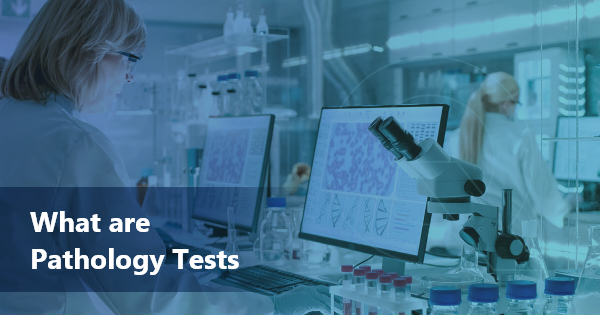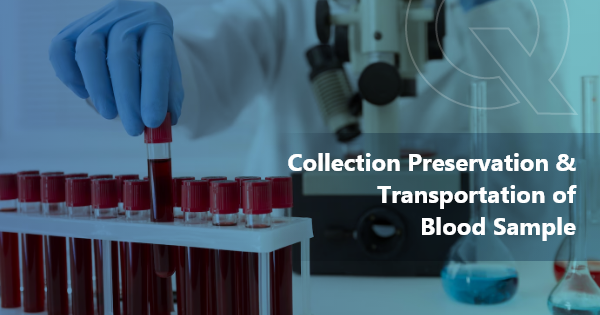In the realm of modern medicine, pathology tests play a pivotal role in diagnosing and managing various diseases and conditions. These tests are essential tools that provide valuable insights into the state of a patient’s health by examining samples of tissues, blood, urine, or other bodily fluids. This article aims to shed light on what pathology tests are, their significance in healthcare, and the different types commonly employed.
I. Pathology Tests: A Vital Diagnostic Tool
Pathology tests, also known as laboratory tests or clinical tests, encompass a wide range of procedures designed to analyze biological specimens. These tests yield critical information that aids in the identification, evaluation, and monitoring of diseases and health conditions. They are indispensable in healthcare, influencing medical decisions, treatment plans, and overall patient care.
II. Types of Pathology Tests
A. Blood Tests
Blood tests, or blood chemistry tests, are among the most common forms of pathology tests. They involve the analysis of a sample of blood to measure various parameters, such as blood cell counts, glucose levels, cholesterol levels, and markers of organ function. Blood tests are instrumental in diagnosing a multitude of conditions, including diabetes, anemia, liver diseases, and infections.
B. Tissue Biopsies
Tissue biopsies involve the removal and examination of a small sample of tissue from a specific area of the body. This procedure is performed to identify abnormal cells or tissues, determine the extent of diseases, and guide treatment decisions. Biopsies are crucial in diagnosing conditions like cancer, autoimmune diseases, and infectious diseases.
C. Urinalysis
Urinalysis is the examination of urine for various chemical components, cells, and microorganisms. This test provides valuable information about kidney function, urinary tract infections, diabetes, and metabolic disorders. It is a non-invasive yet highly informative diagnostic tool.
D. Imaging Tests
While not directly performed in a laboratory, imaging tests such as X-rays, MRIs, CT scans, and ultrasounds are integral in pathology. They provide visual representations of the internal structures of the body, aiding in the detection and diagnosis of conditions like fractures, tumors, and organ abnormalities.
III. The Process of Conducting Pathology Tests
A. Sample Collection
The first step in conducting a pathology test is sample collection. Depending on the type of test, samples can include blood, tissue, urine, or other bodily fluids. It is crucial to ensure the integrity and proper handling of the sample to maintain accurate results.
B. Preparation and Analysis
Once collected, the sample undergoes a series of preparations to extract the relevant information. This may involve centrifugation, staining, culturing, or other specialized techniques depending on the nature of the test. Skilled laboratory professionals meticulously perform these steps to ensure precise and reliable results.
C. Interpretation and Reporting
After analysis, the results are interpreted by trained pathologists or medical technologists. They assess the findings in the context of the patient’s clinical history, symptoms, and other relevant information. A comprehensive report is then generated, detailing the findings and any necessary recommendations for further action.
IV. Significance of Pathology Tests in Healthcare
A. Early Detection and Diagnosis
Pathology tests are instrumental in the early detection and diagnosis of a wide array of diseases. Timely identification of conditions allows for prompt initiation of treatment, greatly enhancing the chances of a positive outcome.
B. Monitoring Treatment Efficacy
In addition to diagnosis, pathology tests are crucial in monitoring the progress of treatment. They provide objective data that allows healthcare providers to assess the effectiveness of interventions and make adjustments as needed.
C. Screening and Prevention
Certain pathology tests, such as Pap smears for cervical cancer and mammograms for breast cancer, are employed as screening tools to detect abnormalities before symptoms manifest. This proactive approach is invaluable in preventing the progression of diseases.
V. Advancements in Pathology Testing
A. Molecular Pathology
One of the most significant advancements in pathology testing is the emergence of molecular pathology. This field involves the study of genetic and molecular alterations within cells and tissues. Techniques like Polymerase Chain Reaction (PCR) and Next-Generation Sequencing (NGS) have revolutionized our understanding of diseases, allowing for personalized treatment plans based on an individual’s unique genetic makeup.
B. Liquid Biopsies
Liquid biopsies represent a breakthrough in pathology testing. Unlike traditional tissue biopsies, which require invasive procedures, liquid biopsies analyze circulating tumor cells or fragments of DNA in bodily fluids like blood or urine. This non-invasive approach is particularly valuable in monitoring the progression of cancer and assessing treatment response.
C. Point-of-Care Testing
With technological advancements, some pathology tests can now be performed at the point of care, providing rapid results without the need for a centralized laboratory. These tests are especially valuable in emergency situations or remote healthcare settings, where immediate diagnostic information can be critical for timely intervention.
VI. Specialized Pathology Tests
A. Immunohistochemistry (IHC)
Immunohistochemistry is a specialized technique used to detect specific proteins or antigens in tissue samples. By employing antibodies that bind to these target molecules, pathologists can identify cell types, assess tumor markers, and aid in the classification of certain diseases, particularly in the field of oncology.
B. Flow Cytometry
Flow cytometry is a powerful tool for analyzing cells in suspension. It enables the examination of cell characteristics, such as size, shape, and surface markers. This technique is invaluable in immunology, hematology, and oncology, allowing for precise diagnosis and monitoring of conditions like leukemia and lymphoma.
VII. Challenges in Pathology Testing
A. Quality Assurance
Maintaining consistent and accurate results in pathology testing requires stringent quality assurance measures. Laboratories must adhere to rigorous standards, undergo regular proficiency testing, and implement robust quality control procedures to ensure the reliability of their findings.
B. Interpretation Complexity
Pathology tests often involve complex data interpretation, requiring specialized expertise. Pathologists undergo extensive training to accurately analyze results and provide meaningful insights into a patient’s condition. Collaboration between healthcare professionals and pathologists is crucial for comprehensive patient care.
VIII. The Future of Pathology Testing
As technology continues to advance, the future of pathology testing holds exciting possibilities. Artificial intelligence and machine learning algorithms are being integrated into pathology workflows to enhance the accuracy and efficiency of diagnoses. Additionally, the field of personalized medicine is set to revolutionize treatment plans, tailoring therapies to an individual’s unique genetic and molecular profile.
CONCLUSION:
Pathology tests are the unsung heroes of modern healthcare. They provide crucial insights into a patient’s health, aiding in diagnosis, treatment, and prevention of a wide range of medical conditions. By understanding the significance and various types of pathology tests, individuals can appreciate the intricate web of knowledge that underlies their healthcare journey. As technology advances, so too will the capabilities of pathology, ushering in a new era of precision medicine and improved patient outcomes.



![Blood Test for Hair Loss [Male/Female] Blood Test for Hair Loss](https://oncquest-blog.s3.ap-south-1.amazonaws.com/blog/wp-content/uploads/2023/12/12044200/Blood-Test-for-Hair-Loss.webp)

